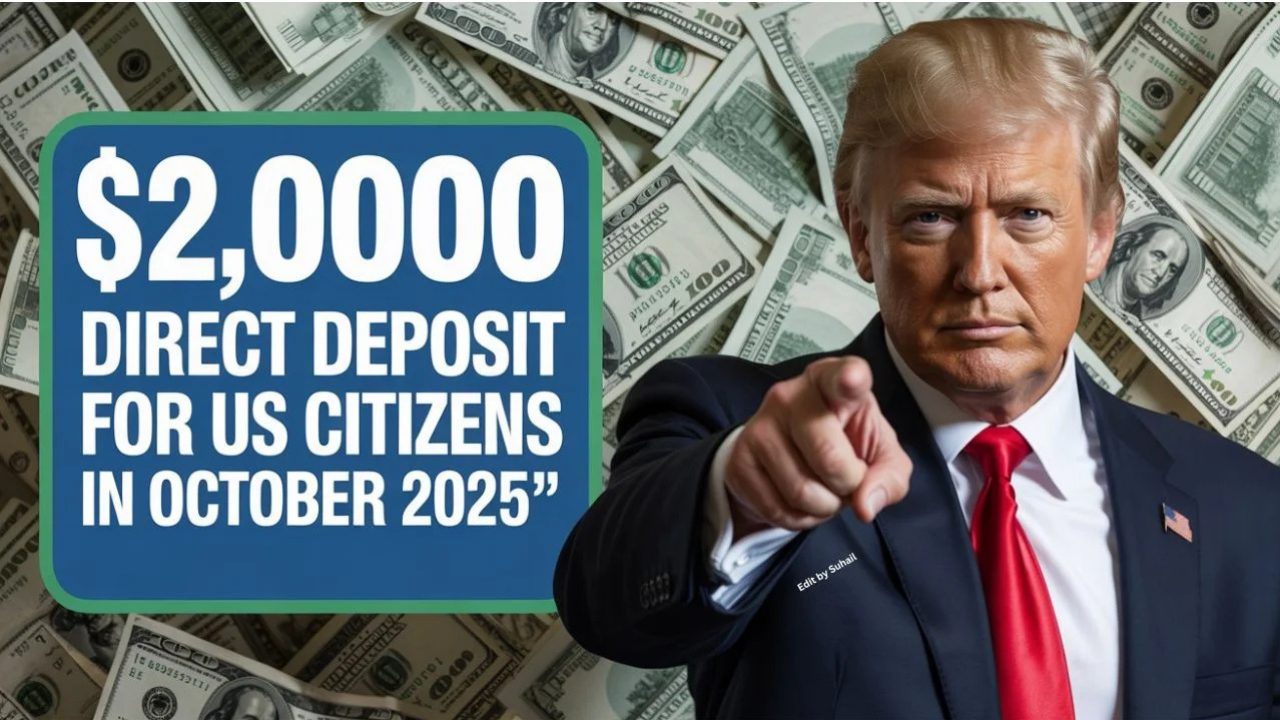$2,000 Direct Deposit :As the seasons change and the year draws to a close, discussions are heating up about whether eligible US citizens will receive a $2,000 direct deposit payment in October 2025. With tight budgets, rising prices, and economic uncertainty, the prospect of receiving a lump sum of cash is appealing to many. But amidst all the speculation, it’s important to know what’s true, what’s just a rumor, and what you should be aware of.
The Promise Behind the Hype
The idea of a $2,000 direct deposit brings back memories of previous stimulus packages—payments designed to ease household expenses and encourage spending. Supporters argue that such payments would:
- Provide relief to families struggling to pay for necessities like rent, utilities, groceries, and medical bills.
- Boost consumer confidence ahead of the holiday season.
- Help local economies, particularly in areas where small businesses are already struggling.
But most importantly, no federal law has yet been passed to authorize the $2,000 payments, and no credible government agency has issued any definitive, binding information. Many of the “eligibility rules” circulating online come from rumor-mongering websites and speculative reporting.
What we know – confirmed and unconfirmed information
Unconfirmed information/rumors
There is no official confirmation from Congress, the IRS, or the U.S. Treasury regarding a $2,000 direct deposit payment plan for October 2025.
- Most of the “eligibility limits” circulating online—such as $75,000 for individuals and $150,000 for married couples—are estimates and are based on previous stimulus programs, not official documents.
- Information about the payment schedule (such as direct deposits in mid-October and paper checks at the end of the month) that is available online has not been confirmed.
- Some of this information comes from less reliable or even rumor-mongering websites. Therefore, always exercise caution when considering such information
What aligns with or is consistent with past events
- If there is a payment, it is likely to be a one-time payment (not recurring).
- It will likely use existing IRS tax records or benefit systems to identify eligible recipients (no new, complicated application required)—similar to previous relief programs.
- Those already receiving government benefits (Social Security, SSI, etc.) are often prioritized in previous relief programs.
- Based on past relief packages, using tools like the “Get My Payment” portal to track status is common.
Due to the uncertainty, consider the $2,000 figure as a possibility only; there is no guarantee.
What you can do now (if you expect to be eligible)
Make sure your tax returns are up to date
If you haven’t filed your 2023 (or 2024) tax return, file it as soon as possible so you can remain eligible if any programs are implemented.
Keep your bank and contact information updated
If payments are made by direct deposit, having the IRS’s most current bank and address information will help avoid delays.
Check official sources
Monitor IRS.gov, Treasury.gov, and congressional press releases. Don’t rely on social media claims or unfamiliar websites.
Beware of scams
Unsolicited calls, texts, or emails asking for your bank or Social Security information and claiming to “help with applications” can be dangerous. The IRS will not request sensitive information in this way.
Budget carefully
Don’t rely on this payment until it is confirmed. If it arrives, treat it as a bonus, not guaranteed relief.
Frequently Asked Questions
Q: Has the $2,000 direct deposit payment been officially confirmed?
Ans: No. Neither Congress, the IRS, nor the Treasury has yet passed or confirmed any official program. It is still a possibility.
Q: If this becomes reality, who will be eligible?
Ans: It is speculated that U.S. citizens or legal residents with a valid Social Security Number, who have recently filed their tax returns (2023 or 2024) and whose income is below a certain threshold (rumored to be: ~$75,000 individual / ~$150,000 joint), will be eligible. These details are not yet finalized.
Q: Will dependents or children receive additional amounts?
Some speculations include an additional amount per child or for dependents. However, this is not certain—it is possible, but not guaranteed.
Q: When will the payments be made?
According to speculations, direct deposits could occur from mid to late October, followed by paper checks or other payment methods. However, there is no official confirmation.
Q: Will I need to apply?
According to speculations, no application will be required; the payments will be automatically processed based on IRS records. But this is also just speculation.
Q: Will these payments be taxable?
Previous relief payments were not taxable, and most speculations suggest the same. However, nothing is certain until legislation is passed.
Q: Can I claim the payment later if I don’t receive it?
Some speculations suggest that missed payments could be claimed through a “recovery rebate credit” on future tax returns—similar to how some previous stimulus payments were handled. But this is also not certain.
Final Thoughts
The idea of a $2,000 direct deposit in October 2025 has been generating a lot of discussion—a sign of how eager many Americans are for financial relief. But for now, approach this information with caution; don’t get your hopes up.
Until lawmakers pass the bill and the IRS or Treasury Department confirms the details, it’s all just speculation. If it does become reality, update your tax status and bank information and keep an eye on official government sources; that will give you the best chance of receiving any payment. In the meantime, stay vigilant against scams, budget wisely, and continue to get your information from trusted, official channels.

